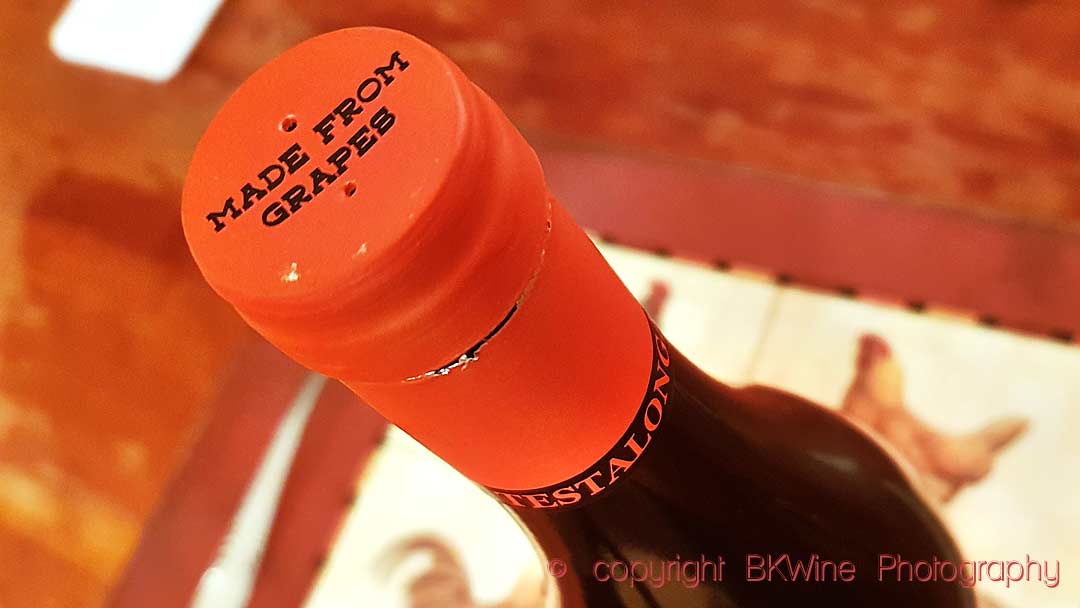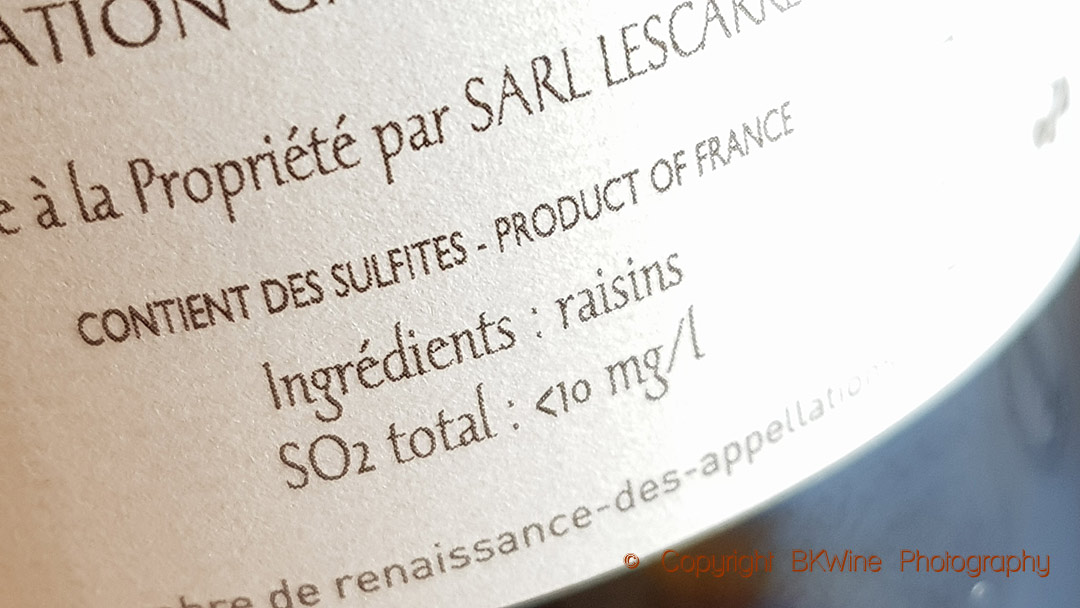
It will soon become a reality, what some have been waiting for a long time for and which some will not care about at all. List of ingredients on wine bottles. In December this year, it’s time. December eight. (Detailed article about this coming soon on BKWine Magazine.) From that date, it will be mandatory to list ingredients on wine (when bottling, so it will take some time to reach shops).
Some will not care. These people can be divided into three categories: those who don’t care how a wine is made as long as it tastes good, those who believe that wine is made with grapes and nothing else (which in many cases is mainly accurate), and those who accept that an additive is needed now and then, as with most other foods, but think which one(s) doesn’t really matter and leave that decision to the producer. Or, to simplify: those who believe that winemakers are mostly honest people who mostly do a good job.
Others will see this day as a victory, a milestone. Those who have been looking forward to this day for a long time are, above all, those who think we should make wine with grapes and nothing else (and bread with just flour and water?) and who believe that consumers are being deceived if they are not told which “additives” have been used; those who believe that wine makes itself if you just put the grapes in a tank.
Most consumers probably belong to one of the categories of the group that doesn’t care so much, so not many feel cheated. But of course, it is right and proper that wine, just like all packaged food, should have a list of ingredients.
But will people read it? Do you read it when you buy your food? Sometimes there are pretty long lists, and the text is annoyingly tiny. I guess people buy quite a lot of food without giving a damn about the ingredients list. Do you read the ingredient list when you purchase a can of mustard, ketchup, bread, frozen pizza or sausage? And choose the one that has no additives, e.g. yeast, pepper, salt, preservatives or other? (An example from a sausage: “pork meat 65%, water, potato flour, spices (onion, paprika, coriander, nutmeg), salt, smoke flavouring, stabilizer: e250, antioxidant: ascorbic acid. E250 is sodium nitrite, a preservative”.)
In addition, for wine, there will be one more obstacle (probably, not all the details are ready). The list will not need to be on the label, but there will be a QR code that gives you the list. Maybe there is a bit of novelty at the beginning; one is curious, but pretty soon you ignore it and accept that the wine contains some type of preservative (like most things we put in us, e.g. to prevent the attack of bacteria and other microorganisms) and perhaps a stabilizer (e.g. something that keeps the wine from changing colour or becoming cloudy). Some voices will surely be heard saying that the wine industry got the QR code because the ingredients list is too long to fit on the label. Don’t believe them. Most wines have very few additives, and the ones that are there are mainly to give you a tasty and stable product.
At the same time as the list of ingredients, nutritional information is introduced and this must be clearly stated on the label, no QR code there. It is perhaps more shocking to see how many calories you take in when you drink wine than that the wine contains mannoproteins from yeast (used, for example, to avoid precipitation of crystals of acid salts in the wine, the so-called wine crystals).
We take the opportunity to dispel some myths and misconceptions in this area:
- In everyday life, people sometimes talk about “list of contents”. It’s the same thing, but the official term is “ingredient list”.
- “It is forbidden to list ingredients on wine,” say some with a finger pointing at “financial interests and lobbyists”. No, that is a myth. It is allowed but not mandatory (until December, when it becomes compulsory).
- “Wine, especially ‘industrial wine’, is made with many flavouring additives,” say others. No, that’s wrong. The additives, the few that are used, are mostly not about flavouring the wine. They are, above all, to give you a clear, balanced and microbiologically stable wine. One of the few “additives” that give flavour is oak, oak barrel ageing or other oak products.
And now, on to our wine tours:
Wine travel in harvest time
You can already start planning for wine tours next harvest season:
- Champagne, September 27 – October 1
- Champagne and Bordeaux, September 27 – October 5
- Bordeaux, October 1-5
Travel in winter (but summer)
Some of our most exceptional wine tours are during the winter. They are filled with very special experiences. In summer weather in the southern hemisphere!
You have three fantastic long-distance tours to choose from:
- Chile-Argentina in January 2024
- South Africa in February 2024
- New Zealand in March 2024
These are tours with unique and magnificent experiences.
More info on our wine tours here. “World’s Top Wine Tours“. Tours with the people who know wine and who have an unrivalled experience of wine and tours.
Travel in wine regions with someone you trust.
Enjoy the Brief!
Britt & Per
If you appreciate what we do, you can help us: Tell your friends about the Brief or send it to them.
Like us and follow us on social media:
BKWine Magazine on Facebook | Wine Tours on Facebook
Twitter | Instagram | Linkedin | YouTube
This is just the introduction to the latest issue of the Brief. Subscribe to the BKWine Brief and you will get the whole edition in your mailbox next month.
What’s on at BKWine Tours
BKWine is also one of the world’s leading wine tour operators. Here’s what we currently have on our scheduled wine tour program:
- Champagne, September 27 – October 1
- Bordeaux and Champagne, Sept 27 – Oct 5
- Bordeaux, October 1-5
–
- Chile-Argentina, 15-28 January 2024
- South Africa, 8-18 February 2024
- New Zealand, 12-27 March 2024
We also make custom designed wine tours.
We’re different than most other wine tour operators. We are people who know wine inside out, who travel constantly in wine regions, who write award winning books about wine. Who do this out of passion. Our tours are different from others. More in wine tours: BKWineTours.com.













